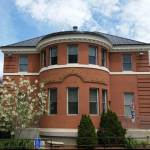Posts by Beaman Library
Wowbrary at Beaman Library!
New items are always arriving at Beaman Library. Stay up-to-date with the Library’s latest purchases with free weekly (and customizable!) emails about our latest books, movies, and music from Wowbrary! Sign up here – all you need is an email address!
Read MoreToy Library Giving Tree
During the month of December, we will have a tree decorated with items that we need to start our Toy Library campaign. We will be the only Toy Library in Central Massachusetts! Everyone has somebody that they buy gifts for that really don’t need anything at all. Why not purchase a share of one of…
Read MoreGraphic Novels at Beaman Library
At Beaman Library, there are graphic novels available for all ages! A number of new titles were recently added to both our adult and young adult graphic novel collections and more titles arrive regularly. While graphic novels are simply enjoyable to read, graphic novels provide a number of other benefits. For example, the illustrations in graphic…
Read MoreFriends Membership
Have you had an opportunity to renew your Friends of the Beaman Library membership? Membership dues provide funding for Library programming, technology, the Library Pass Program, and other expenses not covered by the municipal budget. You may renew your membership online via PayPal. If you prefer, you can complete out this form and return it…
Read MoreNiche Academy
While we continue to practice social distancing at home, this is the perfect time to become acquainted with Niche Academy! Available through Beaman Memorial Public Library’s website, Niche Academy provides access to free online tutorials that allow patrons to learn new skills or freshen up existing skills. While there are a number of tutorials available,…
Read MoreNavigating COVID-19 Professionally
As a result of COVID-19, many professionals have been forced to navigate a new normal. In an effort to support our community as we learn to cope with our current situation, LinkedIn Learning (formerly Lynda.com) has made a number of online courses, or learning paths, freely available. These learning paths are intended to provide job seekers,…
Read MoreThe Library During Covid 19
Please note the following answers to some frequently asked questions you may have about the Library and library services while our services and hours are temporarily altered due to COVID-19: Can I still get help with library-related questions? Yes! Send us an email at beaman@cwmars.org or call the Library at 508-835-3711. If you leave a…
Read MorePlease visit our online resources during our closure
eBooks & Reading Links for adults and children available with your Library card Search the CWMARS eBook Catalog New Ebook user? Here’s how Tutorial for how to use OverDrive to borrow books online with your Library card Tutorial for how to use the Libby app to borrow books online with your Library card Tumble Books for Kids Scholastic…
Read MoreJabez Rice
Ezra Beaman was one of West Boylston’s town founders. A veteran of the Revolutionary War and a fierce advocate for West Boylston’s independence, Ezra Beaman became a local hero. Below are photographs of Ezra Beaman’s grandson and his wife. Jabez Rice (1793-1867) was Ezra’s grandson through his daughter Betsey Beaman and her husband, Luther Rice.…
Read MoreTown Politicians
There are a variety of photographs of local “celebrities” down in the West Boylston Room. Below are two local residents who also served as politicians. Horatio Houghton (1821-1896) served as Town Clerk from 1870-1895, a span of twenty-five years. He was elected as state representative in 1884. Andrew Scarlett (1849-1935) owned a large farm in…
Read More






